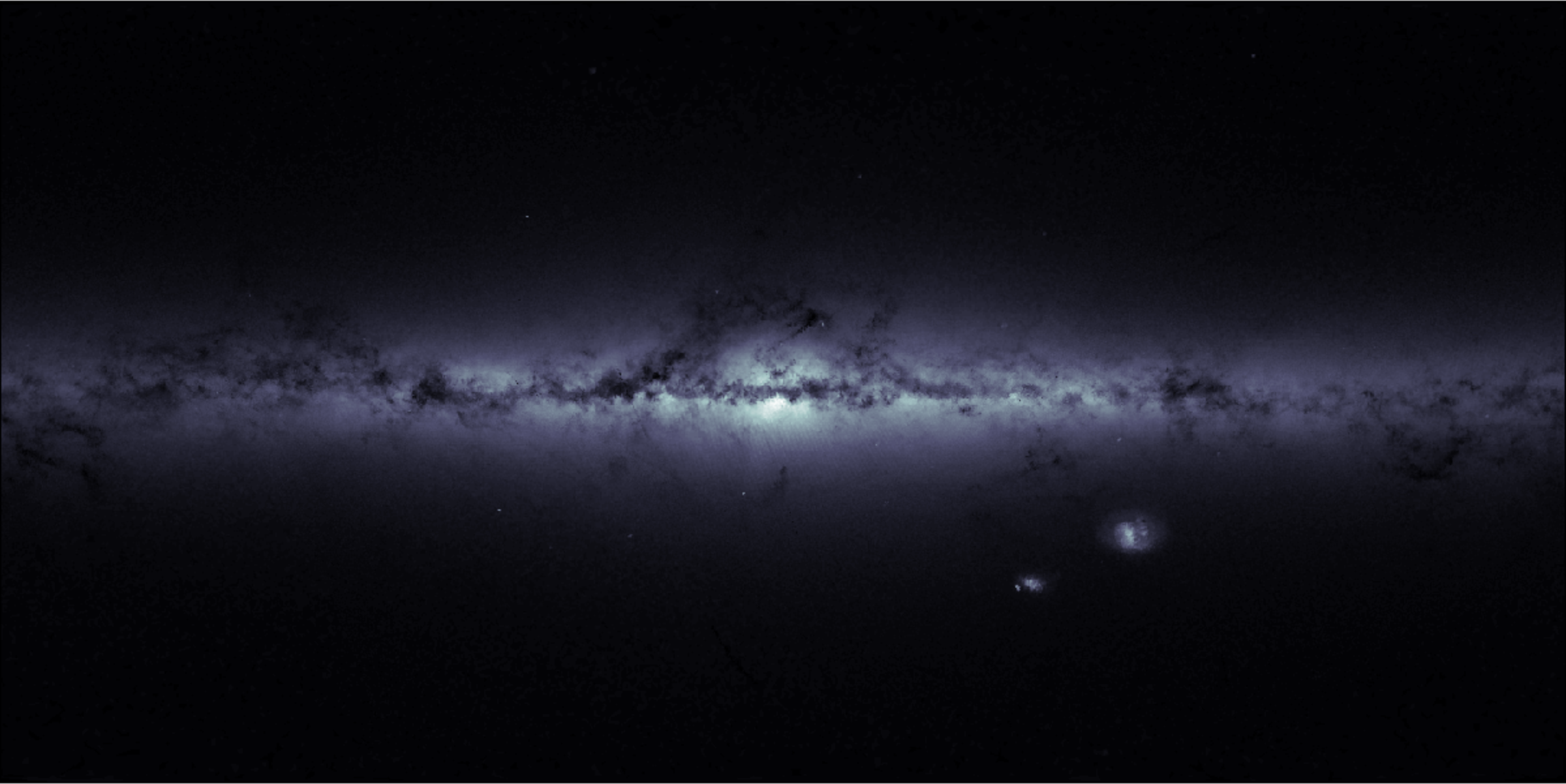
Our home galaxy, the Milky Way, is a barred spiral galaxy of approximately 200 to 400 billion stars.
Under good viewing conditions, the plane of the Milky Way is visible as a band of light across the night sky. The name Milky Way being derived from a translation of the Latin “via lactea”, itself derived from the Greek “galaktikos kýklos”, meaning “milky circle”. Even a pair of binoculars or a small telescope will resolve a multitude of faint stars within the band of the Milky Way. Parts of the Milky Way are obscured by dark nebulae of interstellar dust particles, such as the Coalsack Nebula and the Great Rift.
The Milky Way galaxy is comprised of a central elongated bulge of stars surrounded by a disk of several spiral arms rotating around its centre of mass – faster towards the center and slower towards the outer edge.
The galaxy is around 87,400 light-years in diameter and about 8,500 light-years thick across its centre and around 1,000 light-years thick across the spiral disk. An area of dark matter, containing some visible stars, may extend up to a million light-years from the centre.
Contained at its centre is an intense radio source known as Sagittarius A* – a supermassive black hole of around 4 million solar masses.
Our solar system is located in one of the spiral arms, known as the Orion Arm, around 27,000 light-years from the centre. The Sun orbits the centre of the Milky Way once every 230 million Earth years – known as a galactic year.
The Milky Way is surrounded by a halo of older stars and globular stars clusters. It is also part of a larger group of galaxies, known as the Local Group.
This group consists of two collections of galaxies with the Milky Way and its satellites galaxies forming one lobe of a dumbbell shape, and the Andromeda Galaxy and its satellites constituting the other.
It is believed that the Milky Way began to form around 13.6 billion years ago, shortly after the big bang. Originally the Milky Way formed in a spheroidal shape merging with many other local galaxies, eventually forming its disk shape through the conservation of angular momentum.
It is predicted that in about four billion years the Andromeda galaxy will start to collide with and eventually merge with the Milky Way.
The Local Group forms part of the Virgo Supercluster of galaxies, which is itself part of the Laniakea Supercluster – Hawaiian for “open skies” or “immense heaven”.
The Milky Way’s satellite galaxies include:
- The Sagittarius Dwarf Galaxy
- The Large Magellanic Cloud
- The Canis Major Dwarf Galaxy
- The Ursa Minor Dwarf Galaxy
- The Draco Dwarf Galaxy
- The Carina Dwarf Galaxy
- The Sextans Dwarf Galaxy
- The Sculptor Dwarf Galaxy
- The Fornax Dwarf Galaxy
- The Leo I and II dwarf galaxies
- The Ursa Major I and II Dwarf Galaxies
- Plus several other faint dwarf spheroidal galaxies